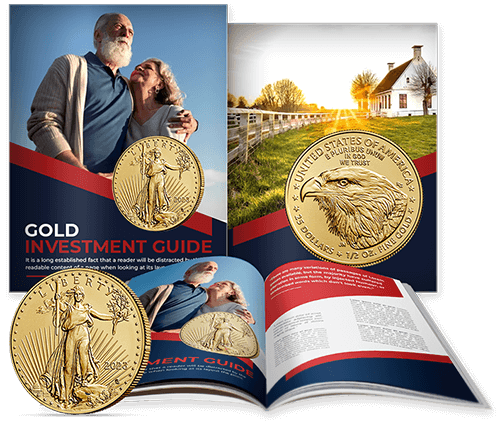Introduction
A market correction indicates instability of the financial markets. Corrections occur when the value of an asset class or the overall financial market drops more than 10% from the most recent peak. Market corrections can bring both investment opportunities in undervalued assets and risks such as decreased portfolio value and heightened volatility.
To mitigate the negative effects of market corrections, financial advisors recommend diversifying your investments. Investing in precious metals safe guards your money during market corrections, offering a safety net for volatility.
Visit Colonial Metals to learn about multiple investment options, including buying silver and gold coins or precious metals IRA.
Understanding Market Correction and Its Effects

Market corrections are a decrease of prices in the financial market of 10% to 20% from the market’s peak. Market corrections are indicated by increased volatility, negative sentiment concerning investments, and a downturn that lasts less than two months. If the decrease exceeds 20%, a bear market occurs. Bear markets are characterized by more general economic decline, negative sentiments, and at least two months of decline.
Here are some of the reasons a market correction can occur:
- economic growth downturns indicated by GDP numbers, employment rates, or manufacturing data
- geopolitical turmoil and natural disasters
- overvaluation of assets
- changes in interest rates, particularly rising rates
One approach to monitor market corrections is by staying up to date about the potential of Federal Reserve interest rate reduction.
Historical Market Corrections and Their Impacts
Market corrections happen approximately every two years and are usually brief, but many memorable market corrections have developed into bear markets. All market corrections affect asset classes differently.
Some of the most notable market corrections:
- Great Depression (1929-1932)
- Black Monday (1987)
- Dot-Com Bubble (2000-2002)
- Global Financial Crisis (2007-2009)
- COVID-19 (2020)
The Great Depression, the dot-com bubble, and Black Monday negatively impacted stocks, while the global financial crisis affected real estate. According to an article in the International Review of Economics & Finance, the COVID-19 market correction impacted all asset classes except for gold, which reached an all-time high. In most historical market corrections, gold has increased in value.
Market corrections allow you to invest in undervalued stocks and serve as a reminder to reassess and rebalance your investment portfolio. If you invest in precious metals, market corrections grant peace of mind while your assets grow.
The Role of Precious Metals in Your Investment Portfolio

There are many benefits of investing in precious metals. Gold and Silver hedge against inflation, are independent of government agencies and are physical entities you can protect. Adding metals to your investment portfolio guards your assets from market volatility.
Civilization has always desired gold and silver. Precious metals have intrinsic value and increasing demand in industry sectors, making them smart investment assets to diversify your portfolio.
Gold has retained stability throughout economic downturns, and its value has tripled since the 1970s, leading many to call an investment in gold a safe haven against market uncertainties.
Buying silver also diversifies your portfolio and generates most of its demand through industrial use. This industrial demand does cause volatility in the price of silver.
Buying Gold: A Safe Haven Asset
There are many rewards associated with investing in gold, but all methods also contain risks. You can buy gold through various means, including:
- Physical bars and coins. You may incur additional fees when correctly storing and insuring your gold.
- Gold mining stocks. These face more volatile prices and are more susceptible to market fluctuations.
- Gold EFTs, which are exchange-traded funds. They limit your direct ownership and access to gold.
- Gold certificates. Certificates are more liquid than other forms of gold investments, but you will not physically possess gold, and face transactional fees.
- Gold IRAs. IRAs are individual retirement arrangements, and to invest in a Gold IRA, you must have existing IRA accounts or retirement funds. The gold is stored in approved depositories.
Buying Silver: A More Affordable Alternative
Silver is a more affordable investment compared to gold, making it more accessible. But, it can be bought through the same methods as gold.
Silver is a precious and industrial metal. Many sectors require silver, including:
- electronics
- solar
- automotive
- jewelry
- silverware
Source: (Investing News).
Because of its dual purpose, the demand for silver is increasing, therefore its value is too.
Strategic Tips for Investing in Precious Metals During Market Corrections

Like all investments, the value of precious metals fluctuates with the financial market. To avoid risk, you should evaluate the factors that result in market corrections: geopolitical events, economic currents, and market sentiments.
You should assess your long-term and short-term investing goals. Investing in gold IRAs may be beneficial if you are focused on long-term wealth preservation, whereas if you are focusing on immediate gains, you may invest in gold certificates.
Learn more about the pros and cons of various methods of investing in gold.
Determining Optimal Allocation for Gold and Silver Investments
Deciding how much of your portfolio you should invest in will require an assessment of your risk tolerance and overall goals. In periods of economic instability, you risk losing all your funds without a diverse and balanced portfolio. Investing 10% of your assets in silver and gold can provide security (CBS News).
Risks and Considerations

When investing in physical precious metals, consider the additional funds you may face to store and insure your silver or gold. There are benefits to having portable assets, but you may need safe and specific insurance.
Some investments allow you to avoid the physical fees, but EFTs, certificates, and stocks open you up to the potential of transnational and management costs.
There are specific considerations when investing in a Gold IRA Rollover. You will encounter tax implications, including deferred taxes, paid upon withdrawal. You may also face penalties for withdrawing money early from your gold IRA.
Fluctuations in Prices of Precious Metals
Investing in any asset class requires an assessment of your risk tolerance. Both gold and silver hedge inflation and remain valuable through historical economic downturn, but their values are variable.
Silver prices, due to the metal’s industrial uses, vary based on its demand. It is considered less valuable than gold, resulting in lower values.
As a smart investor, you should stay informed on the current market conditions and values of gold and silver.
Future Outlook for Precious Metals

With every asset class, the value ebbs and flows with the state of the financial market. There are no foolproof predictors for the value of gold and silver investments, but historically, precious metals have retained value through economic crises.
Everything from health crises to market corrections will affect the temporary values of gold and silver, but the demand and overall value of precious metals have yet to significantly decrease.
The Enduring Value History of Precious Metals
One of the many advantages of investing in precious metals is their values’ longevity. As both gold and silver intertwine more with industries, their demand will continue to increase and thus their value will continue to stay high.
Read more about the value of gold.
With recent and current economic instability, economists are offering more insight into the reality of buying gold and silver.
At the World Gold Council, chief market strategist Joe Cavatoni said, “If you look at gold’s performance historically, it’s the kind of asset that should perform well through uncertainty, as it has done in five out of the last seven recessions.” (CBS News)
Bottom Line
When considering investing in precious metals during market corrections, you should evaluate the current values of gold and silver and look at the overall economic sentiments.
Although it is unlikely precious metal values will diminish as the financial market drops, they are volatile and susceptible to value decrease. You should assess your risks.
If you are considering buying gold and silver, conduct thorough research and consult experts. Explore Colonial Metals Group and their in-depth experience and individualized investing plans.
Frequently Asked Questions (FAQs)
Is investing in precious metals a good strategy during all market corrections?
All market corrections are different, but investing in precious metals is usually considered a good strategy, as the values of gold and silver can act as hedges against inflation.
How much of my investment portfolio should be allocated to precious metals?
The diversification of your investment portfolio depends on your financial goals and risk tolerance, but experts recommend investing less than 10% of your portfolio.
What are the tax implications of investing in gold and silver?
There are varying tax implications, including tax deferrals that require payment upon withdrawals, as well as penalties if you withdraw too soon. A tax professional can assist you with a more personalized evaluation of the implications.
How do I decide between investing in physical metals and metal ETFs/stocks?
The decision to invest in precious metal ETFs/stocks or buy physical gold and silver depends on your personal preferences and storage considerations.
Can silver and gold investments hedge against inflation?
Precious metals are considered hedges against inflation as they usually increase in value as inflation increases and the economy destabilizes.




